
14 minute read
Surviving Perimenopause
from FF May 2021
by Forsyth Mags
BY LISA S. T. DOSS
No one chooses to board the topsy-turvy roller coaster ride of perimenopause! Permission sounds too much like a courtesy! Instead, the bumpy ride can wreak emotional, mental, and physical havoc on women’s lives!
Advertisement
Welcome to the Club!
A club comprising 37 million American women, ranging in age from 40 to 60, who understand each other, especially when the words, “Is it hot in here, or is it me?” call out to the room. Instantly, curious smiles and nods appear! Without knowing when the clock chimed, perimenopause arrives. You’re not alone if you, too, feel irritable with a whole host of problems from difficulty sleeping to night sweats, weight gain and excess belly flab to new hormonal mood swings, loss of sexual urges, and forgetfulness. It’s an overwhelming list; however, every aspect is a chemical imbalance! As ovary production slows estrogen and progesterone levels, the snowball effect impacts the mind and body.
How to Tackle Change
We, too, must evolve by altering our daily habits and food intake. Perimenopause permits you to start pampering yourself! • SELF-CARE: Start providing for your physical, emotional, and spiritual needs; therefore, take time to rest, enjoy friendships, join groups, pursue hobbies, and be present in the world.
• WEIGHT AWARENESS: Losing muscle around the abdomen, hips, and thighs can change the way your clothes fit without your being aware of it. The solution is to increase physical activity.
Grab the girls or the family and start an exercise regimen, such as walking, bicycling, taking yoga, or
Pilates. Or, sign up to join a group cardio workout. Physical activity increases the production and repair of existing brain cells, fostering memory.
• CONSUME FEWER CALORIES: Sugar accounts for an additional 300 calories per day in the average American diet. It’s easy to surrender to baked goods, ice-cream, candy, and sugar-sweeteners found in soft drinks, juices, energy drinks, flavored waters, sweetened coffee, and tea. Changing habits by reducing the number of calories consumed begins by increasing nutrition. Boron-containing foods, such as green leafy vegetables, fruits, nuts, and legumes, will balance estrogen levels and prevent the onset of osteoporosis. It’s vital to consume more low-fat dairy products and eat less chicken and red meat. • INDIAN CUISINE: Turmeric is a medicinal, golden spice packed with antioxidants. While possessing antimicrobial, anti-inflammatory, and healing properties, it is relevant to perimenopause health disorders. Whether you chose to enjoy
Indian cuisine or take a supplement, turmeric can help elevate and balance estrogen levels.
• ONE GLASS PLEASE: Red wine contains resveratrol, which prevents free radicals from damaging brain cells. Just one glass will help keep memory loss at bay! However, its important not to overindulge. Additional intake can put you at risk for cancer and other diseases!
• MAGNESIUM SUPPLEMENTS: A powerful stress-reliever that regulates the nervous system, blood sugar, thyroid health, slows the aging process, and promotes sleep. Research magnesium glycinate to understand the complete list of benefits for the body, mind, and spirit. A 500-mg magnesium glycinate tablet is likely to include 100 gm of magnesium.
• TAURINE, A SECONDARY SUPPLEMENT: Complementing magnesium, taurine benefits perimenopausal symptoms by balancing the nervous symptoms (anxiety, migraine headaches, and difficulty sleeping) and suppressing the appetite. The recommended daily intake is 500 mg.
• RESEARCH: Validation comes in understanding the chemical changes occurring within the body. Start interviewing immediate family members on their experiences, and read about the transition from perimenopause to menopause. Prepare questions for your doctor to learn your options. Some women prefer diet and exercise, while others seek to correct excessive bleeding cycles medically or surgically.
Lastly, surround yourself with loved ones and friends who support your efforts to live healthily!
Reaching Menopause
The average age at menopause is 51, but symptoms can begin a decade before and last years after. Twenty-five percent of women experience no symptoms; yet, each individual’s journeys can improve with knowledge, natural supplements, a well-balanced diet, and self care!
How to Stop Sweating the Small Stuff and Like your Kids Just as They Are
BY KAREN COOPER
Acceptance is a magical thing. It gives us confidence. It makes us powerful. How often do we feel this way? Truly accepted for being ourselves? Truly seen and loved just as we are? Probably not enough.
It’s hard to overlook imperfections and things that aren’t the way we hoped they would be. It’s also hard not to let our mood or our own expectations dictate how we behave toward the ones we love the most. “Pick your battles,” I always tell myself. Easier said than done!
Thinking about the ones our words and actions impact the most…what if picking our battles could change our children’s future? There is much evidence to show that positive reinforcement produces positive results. Call it Positive Parenting, Operant Conditioning or “Catch them being good.” It all produces the same result. Reinforce good behavior with a reward. The reward can be praise, a hug, a treat…whatever you decide it should be…just keep it positive.
Here are some specific ways it can work:
LET EMPATHY BE YOUR GUIDE: Of course there are rules and expectations, but everything is not black and white. We know in our own adult lives that things happen to throw us for a loop—in our jobs, our relationships, our moods, etc. The same thing is true for our kids. Give them grace when they mess up and figure out why, before you go straight for the punishment.
MAKE YOUR EXPECTATIONS CLEAR: If your child isn’t sure what you want him or her to do, he/she is set up for failure right from the get-go.
GET TO THE ROOT OF ANY PROBLEMS THAT EXIST WITH YOUR CHILD: If you are having to ask your child again and again to comply with your requests and it is creating conflict, there may be a bigger issue at hand. Giving them your undivided attention can help. Are they feeling overwhelmed by something else? Are they upset about something they aren’t telling you about? Do they feel that what you’re asking is unfair? Lecturing and nagging will only make things worse and undermine your relationship. Show your child that what matters to him or her matters to you, and figure things out together. CHECK YOURSELF: Take a look at your own worries and expectations and think about what you can do about them. For me this took some soul searching and figuring out how to deal with my own issues, which should not become their problems. It can be hard to accept that in some ways our kids might not meet the image we had in mind for them. A time comes when getting honest with yourself is necessary, and understanding why you might be pushing too hard can benefit everyone! BE GENEROUS WITH YOUR LOVE, YOUR PRAISE AND YOUR ATTENTION: Regardless of where your child is at any given moment, remind him or her how special and wonderful he/she is. Don’t make your approval performance-based. This certainly doesn’t mean they get a pass for not meeting their goals and expectations. There are always consequences for not meeting expectations, and those are something you can decide on as the parent, or you and your child can decide together. I like to get buy-in from my children on their consequences, because it packs a bigger punch when they have helped set them up.
REWARD POSITIVE BEHAVIOR: Rewarding positive behavior begets more positive behavior…or so the theory goes. If the young person knows they will be rewarded for their actions, and the reward matters to them more than exhibiting the negative behavior, you have a winner! Do everything you can to find a reward that will matter. Sometimes the reward that matters most is a parent’s pride and happiness that the kid is doing the right thing. So make sure you are telling the kid that often. If they mess up, find out why and try, try again!
Eagle Scout Project Helps Shape Up Sunrise UMC Disc Golf Course
BY AMY HILL

While many young men have spent their time in quarantine playing video games or watching TikTok for hours on end, West Forsyth High School student Sriman Katragadda was busy giving back to his community and working hard to become an Eagle Scout. The COVID-19 pandemic prompted Sriman to find a safe way to give back to the community without putting himself and his team of helpers at risk. After doing some research, Sriman stumbled upon a great opportunity to give back while spending time outdoors—two things that are near and dear to his heart. Achieving Eagle rank in Boy Scouts is no simple feat. To earn this ranking, scouts must fulfill a number of requirements, which include earning at least 21 merit badges, serving in a position of responsibility, and completing a service project for the community. For his Eagle Scout project, Sriman wanted to make a huge impact. The popular Sunrise Disc Golf Course at Sunrise United Methodist Church is much loved among locals and Sunrise UMC church members. Since it is maintained solely by volunteers and donations, Sriman decided that he could benefit his community by giving the course some much-needed TLC.


Orchestrated by Sunrise UMC members Jimmy Williams and Darren Hickerson, construction on the nine-hole disc golf course commenced in 2018. Since that year, the Sunrise Disc Golf Course has been a hot commodity in the Lewisville community, and happens to be free of charge to the public. The course allows for wholesome family fun for all ages that takes place in nature, as opposed to in front of a television or tablet screen. Even while he and his team were working on the project during the COVID-19 pandemic, Sriman recalls seeing 15 to 20 disc golf players enjoying themselves throughout the course.
The project concluded this year on Saturday, March 20th, and took place over two Saturdays for four to five hours each day. The woods surrounding the course needed to be cleared for tee number 18, as the area was completely overgrown with bushes and debris from the church playground. Throughout the project, Sriman was pleased to have plenty of help from his fellow troop members from Troop 934, in addition to the help of adults. The group cleared wood and debris in order to build six platforms for
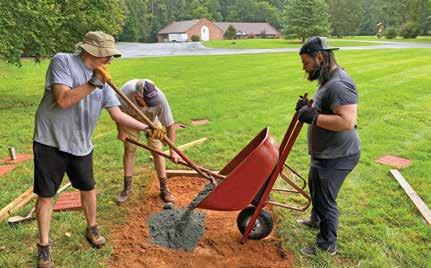
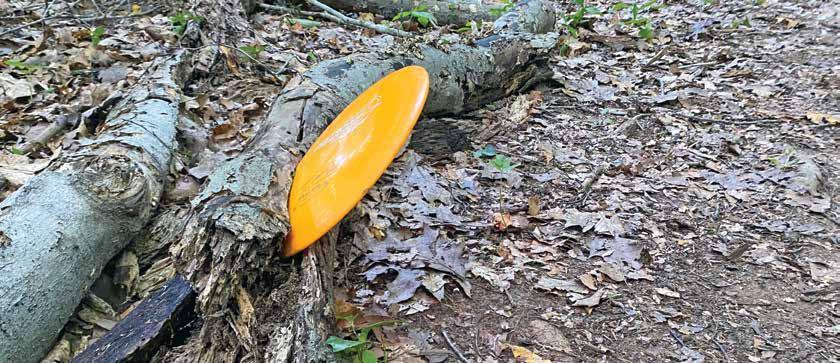

disc golf players to stand on in order to throw their discs (tees 6, 7, 8, 9, 15, and 18). After digging a couple of inches into the ground for each platform’s wooden base, crushed granite was used to level the tees out. Papers and sand were added to fill in any remaining holes.
Four years ago, Sriman joined Boy Scouts due to his love of camping and being outdoors. Once he started becoming more involved with his troop, he was surprised to learn about the numerous volunteer activities he would have the opportunity to partake in. Although the project isn’t complete until it has been approved by the Senior Patrol Leader and the Old Hickory Council, Sriman is on the fast track to earning his Eagle rank. He is grateful to have had such a supportive troop and parents, and was pleased that the group ran into very few obstacles while performing manual labor for the course renovation. Sriman thanks the volunteers from Troop 934, Sunrise United Methodist Church, and Darren Hickerson for all of their support throughout the project.

While Sriman is currently only 14 years old, after graduating from high school, he hopes to attend college and major in a science-based field. In his free time, he enjoys biking and playing basketball. Additionally, he is an avid piano player and has been taking lessons for six years. Interested in volunteering at, or donating to, the Sunrise Disc Golf Course? Visit sunrise-umc.org for more information on the course and for ways to get involved. Contact Jimmy Williams or Darren Hickerson via e-mail at jamesdw@triad. rr.com and hickersd@yahoo.com. For more information, call Jimmy at (336) 971-2517, or Darren at (919) 698-2526.
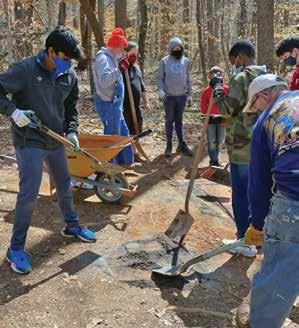
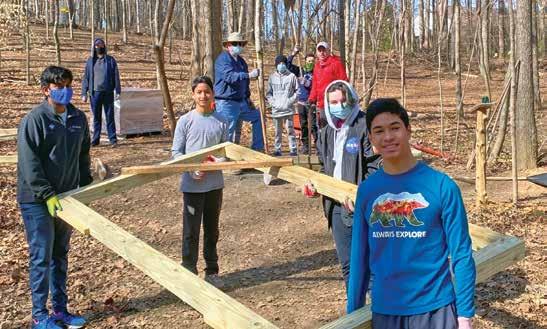
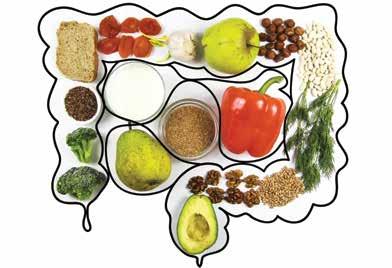
The Probiotic Kitchen PART 2: Foods and Recipes
BY LISA S.T. DOSS
“Every artist was first an amateur.” —Ralph Waldo Emerson Three attributes pique interest in the art of fermenting foods—probiotics, nutrient density, and food preservation! We select foods not because of the health value; instead, we crave particular complex flavors that are sometimes familiar or new and unimagined! Beyond the store-bought jar, the curious gardener or first-time canner seeks their own fermentation journey. It begins by perusing online recipes and reading books by experts like Sandor Ellix Katz and Kirsten and Christopher Shockey. The next step is to gather supplies and start the enriching experience of fermentation, from harvesting vegetables to plucking fresh fruit directly from trees or bushes!
Equipment
The porcelain crock used to have a special place in the household until canning season began. Perhaps, it’s now still in your home, unused, but reveling in memories. While it may be too large for a beginner; it certainly hasn’t lost its usefulness!
What other tools are needed?
THE CONTAINER: Glass jars allow you to witness firsthand what is happening without committing to four gallons. (Plastic, such as a three or five-gallon bucket, offers a cheap option to make a large batch, but consider using stone or glass as the vessel.
AIRLOCKS: Attached to the top of a Mason jar, the airlock allows air or gases to escape, preventing molds and microorganisms from developing. For the beginner, the airlock system creates a “fool-proof” fermentation! Kits are available, or purchasing the lids and locks together is also possible. TAMPER: Usually constructed from wood and used to press the ferment into the container.
SLICERS: Numerous options to slice, shred, or chop; therefore, consider a food processor or “mandolin” if you don’t have one!
Start with Kraut
Sauerkraut, despite the workout, is one of the easiest foods to ferment. Consider taking the first step! In the process, you’ll understand the role of salt and the value of airlocks. Be particular in choosing your vegetable. The cabbage head should be firm with crisp, shiny leaves! Bypass the one pre-cut and wrapped in plastic! • After coring and shredding, adding thinly-cut vegetables to a bowl, start salting and rubbing the mineral into the leaves. Immediately, the walls will begin to break down and release the juices. Keep massaging and squeezing the liquids. Allow to rest, cover with a towel, for an hour; then, return to massage and squeeze. Continue until you have enough brine to press into a crock or jar. It’s a long day, but worth it!
Don’t forget to taste!
• Never add more water, only salt or vegetables that provide water, such as turnips, sliced onions, carrots, and beets. • Transfer the contents into the jar slowly and always tamp to remove the air bubbles. Allow four inches to remain at the top, termed
“headspace,” for expansion.
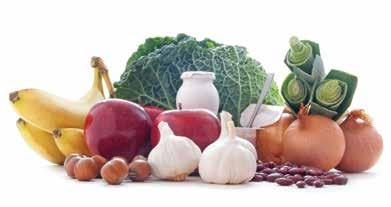
• Add an airlock!
• Place your jar(s) on a cookie sheet to collect exiting brine, out of direct light and in an area between 55 and 75 degrees. If not a cooled location, refrigerate!
• Check your pH levels daily. The goal is 4.6; although, it can be lower. Time depends on the size of the batch! And, take the time to taste it!
Making a Paste
Once you tried your first fermentation and discovered the thrill of success, it’s time to open the door to your favorite spices and flavors, perhaps, in a paste, sauce, or chutney. If you enjoy the aroma of basil, this recipe is ideal for you! 1. Any number of leaves and stems will do. Just keep in mind that a fourth-pound of basil equals a fourth-teaspoon of unrefined salt. 2. Set your food processor to “pulse” until it becomes a paste; then, slowly add salt. Stop when the brine level rises above the solids.
3. Pour slowly into a jar and tamp; then place a sealable bag within the jar and fill with water to create weight. Add the lid. 4. Set aside with a baking sheet underneath in a cool location out of direct sunlight for four days. Check by taste. It should have a pickling quality! 5. Store in glass jars and tamp with headroom. Keep refrigerated for one year!
Adding a few garlic cloves to the basil will transition the paste to a pesto.
The world of fermentation will change the flavoring of your future meals. Consider trying a variety of recipes! Take notes after every batch, identifying ideas to improve the overall taste! Cheers!










